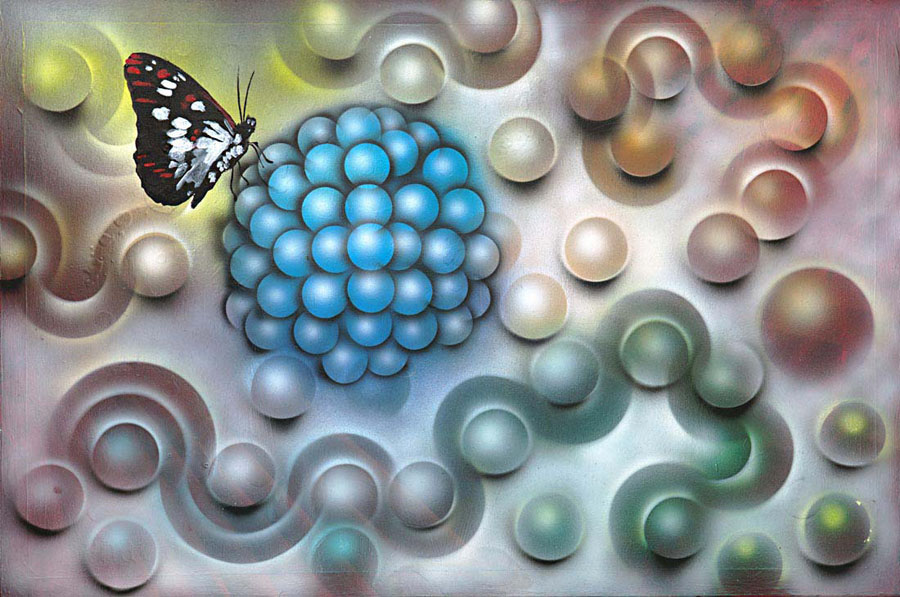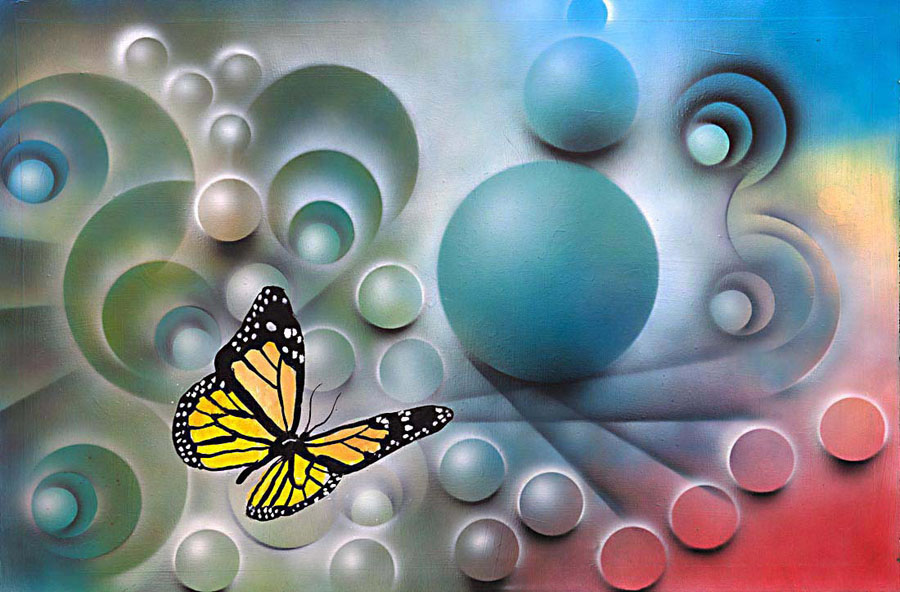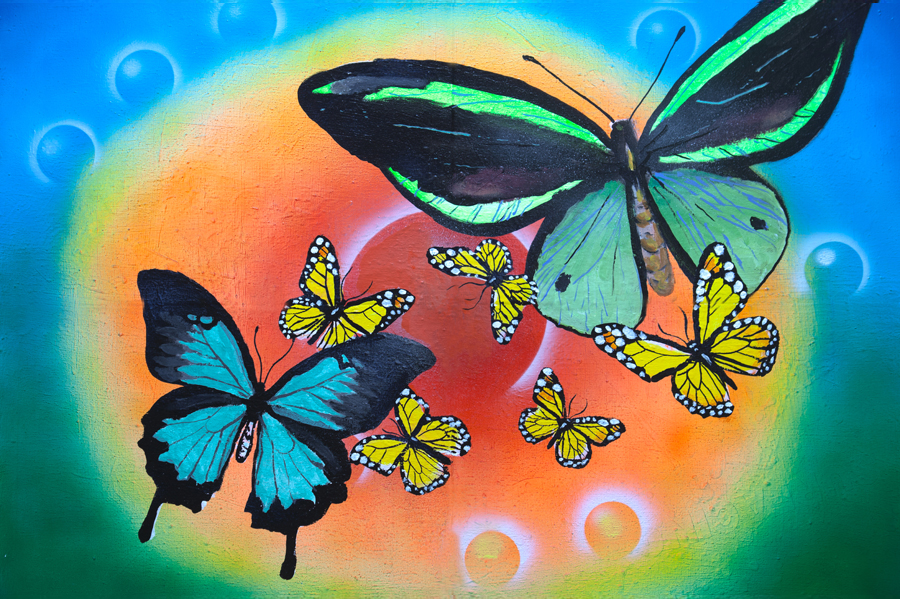art statement
Legrady bio
Legrady cv
Legrady's work
on the CCCA
Art Database
Kingston Proze
AGO Book
launch
|
Why These Three Painting? Three examples of visual language, each slightly different , therefore three different but similar statements.These aim to explain visual language, its grammar, its vocabulary. First, the vocabulary and grammar of visual language we call aesthetiics. Contrary to common belief, aesthetiics is not simply the beautiful but also the ugly, and all the shades in the spectrum between those two.In these works, as in all the Butterfly series they belong to, the butterflies are simply present to tie the separate paintings into a body of work. What is important is what's left after the bbutterflies, the abstract visual statements. Visual language exists to desribe what is awkward to put into words, so whatever we write about these works will be limited in it's scope. One reason veiing that visual language, the languyage of shapes, colors, and what we can see, also includes thoughts and feelings that are subliminal, unconscious, so consisting of the thinking that occurs below consciousness. It may well be that our fancy intellectual thoughts start out as raw emotional responses to the external world, or to internal sensations, and as these thoughts rise to consciousness they transform into more detailed prevision, so that a hot emotion of desire may change in complexity and subtlety and intensity, according to the context of the event they refer to. "Proto-" is a combining form or of raw emotionsprefix meaning "first," "foremost," or "earliest form of". It's used to form compound words like " "protolithic". In chemistry, it specifically denotes the first compound in a series or the one with the minimum amount of an element. t is also likely that this protu-knowledge. It is quitte likely that what we experience on seeing these images is compated to symbols and icons we have unconsciously created as a synthesis of earlier experiences and learning, so that the phoggy background might rvoke ,e,prird of emergence and discovery, for example. As these emotions rise even closer to consciousness, they attain a greater sophistication, even emerhing into thoughtsnad possibly reaching consciousness as language. So an experience might generate a raw emotion in the depths of the mind that rise to consciousness, the emotions undergoing ever increaing levels of complexity, until they emerghe in consciousness as a verbal statement about our observation which started this process.  In this painting above, we have a flat surface of white fog, with small balls emerging at various elevations. As mentionned above, the fog may be linked to feelings of emergence, ouf an unconscious innerness that becomes visible to our conscious intellect. The non-verbal statement made here would hint at how knowledge, like a flower, might emerge casting off the smaller gloves just as a flower casts off the bud's outer leaves in order to blossom into the sunlight.  In this work, the visual language creates a landscape, a space with near and father linear ground. We may be the butterfly defining the space we fly over, the abstract background can turn into woords or a city scape of buildings.  Everything is drawn towards the center, or selse emerges from the center. The butterflies could be ourselves heading to our destiny, flying through the passage of time. |